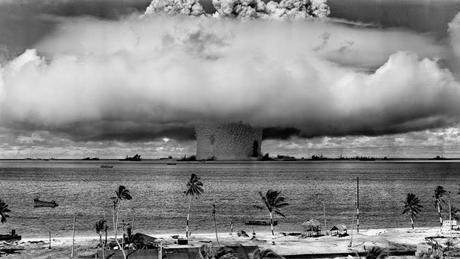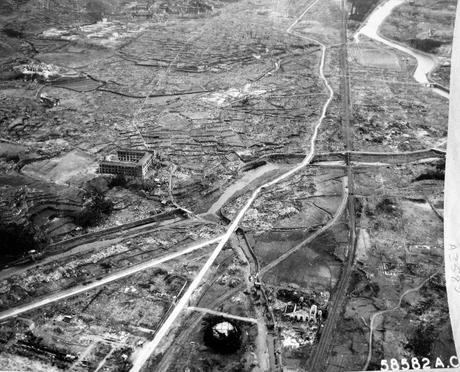
U.S. nuclear testing at the Pacific Proving Grounds in 1946. “Baker,” a 21 kiloton fission device, was detonated underwater on July 25. It created a huge condensation cloud and spread much more radioactive water onto the test ships than was expected, with many of the surviving ships becoming too "hot" to be decontaminated. They eventually had to be sunk.
On October 13, 1999, the GOP-controlled Senate emphatically rejected the Comprehensive Test Ban Treaty (CTBT), 51 to 48, with only four Republicans joining 44 Democrats in supporting the treaty. This was a devastating blow to a pact that had been at the center of global efforts to curb the spread of nuclear weapons.Senate Republicans said it would be impossible to ensure that other nations were abiding by the treaty, and they argued that the pact would make it difficult for the United States to ensure the viability of its own nuclear stockpile. Republicans rejected Democratic complaints that they were sending a dangerous message to other nations interested in joining the nuclear club (like say, Iran). Mostly Republicans wanted to deal then President Bill Clinton a comeuppance for being reelected in 1996, and surviving their impeachment attempt in 1998 -- the gall of the man!
Clinton signed the treaty in 1996. Since then, 164 countries have ratified the CTBT. The United States is not one of them. As an “Annex 2” state (a state with nuclear capability that participated in treaty negotiations), the U.S., along with other Annex 2 states, must ratify the treaty before it can enter into force.
As of 2015, eight Annex 2 states have not ratified the treaty: China, Egypt, Iran, Israel and the United States have signed but not ratified the Treaty; India, North Korea and Pakistan have not signed it. India says it won’t sign the treaty until Pakistan signs it and you know what Pakistan says. North Korea says [explicative deleted].
The nonpartisan Arms Control Association states that, according to the September 2014 New START declaration, the United States has 1,642 strategic nuclear warheads deployed on 794 ICBMs, SLBMs, and strategic bombers. The Federation of American Scientists estimates that the United States' non-deployed strategic arsenal is approximately 2,800 warheads and the U.S. tactical nuclear arsenal numbers 500 warheads. In total, the U.S. has about 4,800 nuclear warheads, including tactical, strategic, and non-deployed weapons. Additional warheads are retired and await dismantlement.
According to the Nuclear Threat Initiative (NTI), the United States will spend at least $179 billion over the nine fiscal years of 2010-2018 on its nuclear arsenal, averaging $20 billion per year, with costs increasing from $16 billion to $25 billion per year over that timeframe.
The United States is the first and, to date, only nation in history to employ nuclear weapons in war.

Nagasaki, August 1945

